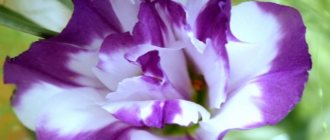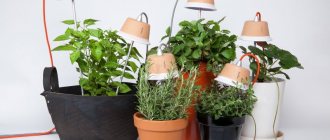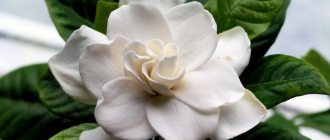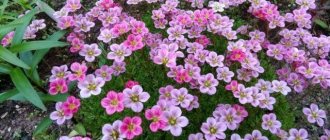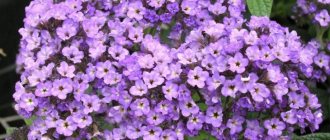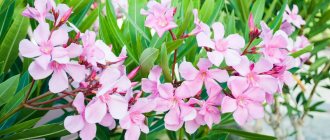Author: Elena N. https://floristics.info/ru/index.php?option=com_contact&view=contact&id=19 Category: Garden plants Published: January 20, 2019Republished: February 20, 2019Last edits: February 17, 2021
- How to plant
- Home freesia
- Armstrong's Freesia (Freesia armstrongii)
Freesia or Cape lily of the valley has not gone out of fashion for hundreds of years. Once upon a time it was hunted by court gardeners and perfumers, now by fashionable florists, brides and photographers. If you dream of growing this outrageous celebrity of the flower world yourself, be patient and arm yourself with the invaluable experience of your colleagues.
- How to grow freesia without a greenhouse?
- What color freesia grows the fastest?
- How to provide moist air to your home freesia and not destroy it?
- Is it possible to make capricious freesia bloom in the middle of winter?
Let's figure it out together!
Planting and caring for freesia
- Planting: in open ground from the second decade of May. For forcing by January - at the end of August in a pot.
- Excavation: October.
- Storage: a month after digging at a temperature of 25˚C, then before planting at 10˚C.
- Flowering: in the garden – August-September.
- Lighting: light partial shade.
- Soil: loose, well-drained, neutral or slightly acidic.
- Watering: during growth and flowering - abundant and regular, then watering is gradually reduced.
- Fertilizing: in the garden: for seedlings - with nitrogen fertilizers, then twice a month with phosphorus and potassium fertilizers.
- Reproduction: seed and vegetative (corms).
- Pests: thrips, spider mites, aphids.
- Diseases: fusarium, scab, gray, dry, penicillium, hard and sclerotial rot.
Read more about growing freesia below.
Freesia (lat. Freesia) , or freesia , is one of the most charming bulbous plants grown both in the garden and at home. Freesia is a genus of herbaceous bulbous perennials of the Iridaceae (Iridaceae) family, which includes about 20 species. The most famous is hybrid freesia, which appeared as a result of crossing several species about a century ago. The plants are native to South Africa, where they grow along wet banks and among bushes. They received their name in honor of Friedrich Friese, a German botanist and doctor.
Freesia is elegant, graceful and delicate, it exudes a pleasant aroma reminiscent of the smell of lily of the valley, and for this it is sometimes called “Cape lily of the valley”. Thanks to all these qualities, it is now at the peak of popularity among gardeners as a cut crop.
- Photo of clivia cinnabar
The aroma and grace of freesia: what do we know about the plant
Freesia was brought from South Africa, or more precisely, from the Cape Province, at the end of the 18th century by the German doctor and botanist Friedrich Friese. In its homeland, this delicate flower grows along the banks of rivers and lakes, among coastal bushes. Freesia is sometimes called Cape lily of the valley because it exudes a very fresh and sophisticated aroma of lily of the valley and exotic fruits.
Freesia is often called Cape lily of the valley for its subtle aroma.
Since the beginning of the century before last, new varieties of freesia began to be actively created in Europe. She was a prominent decoration in the collections of royal flower beds. European nobles admired the grace of freesia, decorated their gardens and balconies with these delicate flowers, and young people in love gave them to their chosen ones as a sign of adoration and worship.
Now freesia is very often included in flower sets, bouquets and compositions. Florists choose fragrant freesia flowers for the bride's bouquet, because they retain their freshness for a long time and do not fade.
Freesias can remain fresh in a bouquet for up to ten days.
Walking past blooming freesias, it is impossible not to pay attention to their attractive beauty. The shiny petals play with their multicolor, like a magical kaleidoscope, and the pleasant delicate aroma attracts you again and again. Freesia flowers are used in the production of perfumes and eau de toilette, and they complement perfume bouquets with notes of spring purity and freshness.
There is such a beautiful legend: freesia received its magical aroma and bright color in gratitude from Spring.
When the White Blizzard imprisoned the newly awakened Spring, Winter returned to the earth again. Small freesia bell flowers became agitated and began to ring in the wind, thereby awakening Spring. Because the flower helped her wake up from sleep, Spring rewarded it with extraordinary beauty. Since then, the plant has symbolized the victory of the approaching warmth over the cold winter.
Description of freesia
Freesia is a corm plant; its closest relative is the well-known iris. The narrow, elongated leaves of freesia reach 15 centimeters in length and 1–2 centimeters in width. The stem is bare, thin, branched. The inflorescence consists of several flowers (usually 3–6). An adult plant reaches a height of 70 centimeters or more.
Freesia flowers are bell-shaped with six petals. They are extremely diverse - the color range varies from rich and bright to the most delicate pastel shades of yellow, red, lilac, purple, blue and white. The middle can be contrasting to the main color, which gives a striking aesthetic effect.
Freesias amaze the imagination with their variety of shapes and color palette
Features of the plant
Freesia flower:
- is a decoration for any bouquet, it is especially attractive for brides;
- does not fade for a long time, does not lose freshness;
- thanks to its aroma, it became interesting to manufacturers of luxury perfumes;
- takes its rightful place in landscape design;
- grown both in open ground (in greenhouses and gardens) and on window sills;
- red-yellow in color grows faster than other varieties.
In the photo: Growing white freesias in the garden
Hybrid freesia reaches a meter in height, has a bare, highly branched stem, and a corm covered with thin brownish scales. The leaves are thin, with a central vein, 15-20 cm long and 1-1.5 cm wide. Fragrant flowers 3-5 cm long are collected in weak one-sided inflorescences. The color of flowers can be any - white, red, orange, blue, purple, yellow, cream, pink... Often the throat of a flower has a contrasting shade in relation to the petals. The fruit of freesia is a capsule.
When does freesia bloom?
Cape lily of the valley delights with fragrant flowers even in the cold season - naturally, in an apartment. The moment the buds appear depends on the planting date. Thus, freesia planted in October blooms from February to March.
As for outdoor plants, depending on the weather conditions of the region, they are planted in open ground approximately from mid-April. The buds appear closer to August and bloom over the next 4–6 weeks. In some varieties, flowering can last until mid-October if the autumn is warm.
Growing conditions
It is best to grow freesia in a greenhouse or greenhouse, where it is easier for it to create the necessary conditions, but this is an activity for experienced or professional gardeners. In principle, freesia can be grown all year round, but since garden freesia does not overwinter in the ground in our latitudes, its tubers will have to be removed from the ground in the fall. But this plant is also used as a potted plant, and indoor freesia blooms just in winter. There are general requirements for all types of freesia, which we will introduce you to.
- Freesia is a very light-loving ; it needs light for 12-14 hours every day, but direct sunlight is destructive, so the best place for freesia is light partial shade.
- Make sure there is protection from drafts .
- The soil is loose with good drainage. Optimal soil composition: peat, leaf, humus and turf soil in equal proportions. Low acidity is preferred.
- Broad-leaved and spreading varieties are planted more freely, while narrow-leaved and small-flowered varieties are planted more compactly.
- If you are interested in lush flowering, then you need a strict temperature regime: before flowering - no higher than 22ºС.
- Flowers can be cut only after at least two flowers in the inflorescence have fully opened. Wilted flowers must be removed so that they do not take away nutrients from newly formed ones.
- Some freesias (in particular, broken freesia varieties) have weak stems that need support , do not forget about this.
- Freesia loves moist air , but when spraying plants, try to do it so that the water does not get on the flowers and buds. The best time for this is 17-18 hours.
- Too hot or too cool weather contributes to deformation of flowers and the formation of empty buds.
In the photo: Growing freesia seedlings in a container
Growing in the garden
When the right conditions are created, freesia will willingly settle in the flowerbed.
Selecting a location
When choosing a planting site, you should remember the growing conditions of this flower in the wild. Cape lily of the valley should be planted under trees and dense shrubs to avoid drafts and direct sunlight.
Planting by seeds
Freesia is not often planted with seeds. There are several conditions:
- Seeds are selected zoned. They are disinfected in a solution of potassium permanganate.
- They are sown in early March at a depth of 8-10 cm. The top is covered with neutral peat.
- Water moderately.
- The seedlings are fed with organic matter.
Planting with bulbs
More reliable way. Freesia bulbs are planted according to the following rules:
- On soft soils, the bulbs are placed at a depth of 10-12 cm, on compacted soils - 5-6 cm.
- Planting is carried out as soon as warm weather sets in. The soil should warm up to 12°C, and the air - to 15°C. In the middle zone - this is mid-May. If frosts occur, the seedlings are covered with a protective film.
- The distance between the holes is 8 cm.
- Bulbs grown in peat pots are planted with them.
- In the middle zone, planting is not done before winter; tubers are also not left to overwinter in the ground.
Growing freesia in open ground
How to grow
Before planting freesia in open ground, it is better to grow the freesia bulbs a little. In March-April, peel the corms from scales and, to prevent fungal diseases, keep them for half an hour in a 0.2% solution of foundationazole. Then place them in fertile, loose soil in peat pots to a depth of 5 cm and keep them on a well-lit windowsill or on a warm loggia until planting.
How to grow ranunculus - tips from experienced gardeners
Some experienced gardeners practice growing freesia from seeds , and although the process is tedious and unreliable, we will tell you how it is done. Moisten the prepared soil and carefully spread the seeds, cover with a two-centimeter layer of soil mixture for seeds, cover with film or glass and keep in a bright place. In twenty days the shoots will appear. When they grow to 2-3 cm, remove the glass and thin them out well. Plant in the ground in mid-May.
- Caring for Citrus Plants
Freesia planting
Freesia is planted in open ground in the spring, after the last frost has passed (somewhere after May 9). We prepare the holes so that the planting depth is about 3-6 cm. Large tubers are planted at a distance of 5 cm, small ones at a distance of 3 cm. The distance between rows is 15 cm. Level the soil and mulch it with coniferous soil or peat to protect it, and at the same time the freesia roots, from overheating. By August, your freesias will produce 1-3 peduncles, and will bloom until the beginning of October.
In the photo: Planting freesias in the ground
Caring for freesia in the garden
During the period of freesia growth, fertilizing is necessary. The first feeding (after seedlings) is carried out with ammonium nitrate (20 g of nitrate per 10 liters of water), then twice a month with potassium salt and superphosphate (20 g and 40 g per 10 liters of water, respectively). In addition, freesia in the garden needs loosening the soil and weeding, especially in the first half of the growing season.
Growing freesia in the garden requires a certain regime of watering the plant. During growth and flowering, freesia should be watered abundantly and regularly, the soil should be constantly moist. Freesias bloom for three to six weeks, then watering is gradually reduced until it stops completely.
It is also advisable to increase air humidity by spraying the stems and leaves of freesia. Both are best done in the evening, but so that the moisture has time to be absorbed. In open ground, freesia is kept until frost.
Advice from professionals on growing eustoma at home and in the garden
Diseases and pests
Freesia has the same difficulties as gladioli: thrips, aphids, spider mites, as well as scab, fusarium and all kinds of rot. Affected plants must be removed and destroyed, and to avoid all these troubles, you just need to disinfect the bulbs before storage with a light solution of potassium permanganate and repeat this procedure before planting. During the process of growth and flowering, observe the regime and degree of watering: do not over-moisten the soil, but do not let it dry out.
Propagation methods used for garden and indoor flowers
Freesia reproduces in two ways: daughter bulbs and seeds. The first method is the fastest and easiest to obtain flowering. Propagation by seeds is also possible, but it is very time-consuming and difficult.
Aboveground and underground parts of freesia
Features of propagation by bulbs
Flowering is the beginning of the accumulation of strength of the bulb in order to give a generous “harvest” in the form of flowering the next time. At this time, children begin to grow near the mother's bulb - from one piece or more. During the growing season, the mother bulb is completely degenerated. Those. in fact, you get not the same bulb that was planted, but a completely new one - replaced. When the flowers begin to lose their decorative qualities, they need to be torn off so that the plant directs all its efforts to growing mother and daughter bulbs, rather than forming seeds. When the last flower has wilted, the plant is left dormant for another week, then dug up, the tops are cut off, left to dry in a dry and well-ventilated room, and then as described in the section on storing bulbs.
Freesia bulb with baby
The babies are separated from the mother's bulb and stored separately. In the first year, the daughter bulbs will not bloom. They must gain mass. They are planted in a similar pattern as the mother bulbs, but in a separate place. That is, a separate area is allocated in the garden where daughter bulbs are planted. They remain in the soil until the tops begin to wither, after which they are dug up, washed, pickled, dried and sent for further storage, as described below. The “kids” ripen in the garden at the same time as the mother bulbs. Having gained strength and increased in size, they have turned into adult bulbs, and will produce abundant flowering next season.
Abundant freesia blooms in the garden in summer
In closed ground conditions, the same thing happens as when describing planting in the garden. The difference varies only in the planting time, which the apartment gardener determines for himself. There is nothing more beautiful than blooming freesia in winter and spring, so adult bulbs should be planted in October. At the same time, you need to plant the daughter bulbs in a separate bowl, and care for them in the same way as adults, understanding that when the mother bulbs begin to bloom with might and main, the bowl with the children will be filled only with greenery, which will gradually begin to fade (simultaneously with the beginning of the peduncle to wither and tops of mother bulbs).
In this state, a pot with babies will look like
A brief step-by-step scheme for propagation by bulbs:
1. Wait until the mother bulb begins to bloom and, as the flowers curl (wither), tear them off.
Sample of a peduncle after the flowers have withered
2. After the tops wither (September-October), dig up the bulbs, arrange them in a row, without tearing off the tops, in a warm but well-ventilated room for a week.
Dug up freesia bulbs with tops
3. Peel the bulbs from the tops and separate the children. They are easily torn off with your fingers without damaging the mother bulb. Treat with any fungicide according to the instructions.
Washed freesia bulbs
4. Leave for storage for two months in a warm place where the temperature is at least 25–30 degrees. Only under this condition does a peduncle rudiment form in the bulb. For example, you can place the bulbs in a canvas bag and hang them on the side of the battery. Not on the battery itself, otherwise the bulbs will simply dry out, but on the side pipe. Place a container of water on the floor under the bag, which will provide the necessary moisture to the bulbs. High temperature (30 degrees) and high humidity (70%) are the main storage conditions.
In this way, you can warm up the freesia bulbs, preparing them for further storage.
5. After this, you can move the bulbs in an open container, paper or linen bag for further storage in a room where the temperature is stable at at least 20 degrees.
Freesia bulbs prepared for storage
6. For an apartment: daughter bulbs are planted at any time, from August to November.
For the garden: planting the bulbs in a separate place in the garden in early April. If the temperature exceeds 17 degrees, the plant's leaves lengthen, and the peduncle decreases, or may not appear at all. Thus, the plant must germinate until the flower stalk appears (5 weeks from planting) in cool, light and high humidity. This rule also applies to growing freesia in an apartment in a pot.
7. Both apartments and gardens: wait until the foliage turns yellow and dig up the bulbs.
8. Repeat points: 2, 3, 4, 5, 6. Now (after a year) you can admire the flowering of the daughter bulbs.
Propagation by seeds
Few people resort to this method, since its implementation will take a lot of time (it takes a year from planting seeds to the appearance of flower stalks), but it is quite feasible. It is better to sow seeds in a pot at the beginning of spring - the period when all nature awakens.
Freesia seeds
Sowing seeds occurs as follows:
1. In March, in a nutritious and moderately moist mixture of humus, peat and sand in equal parts (or a special substrate for bulbous plants), seeds are sown, pre-soaked in water for a day, sprinkled with a layer of soil no more than two centimeters. The pot must have good drainage from expanded clay. Freesia does not tolerate stagnant water.
Recent Entries
Lilac perennials that are beautiful, compact and do not crowd out other plants Why when buying seedlings you should not take the sellers’ word for it and how to determine the age of the plant using 3 signs Tomato seedlings have turned purple or whitish: why the color has changed and how to save the plants
A pot filled with drainage and soil
2. Cover the container with cling film or glass, opening it twice a day to ventilate and remove condensation. Seeds should germinate at room temperature 20–25 degrees.
The greenhouse effect is obtained when a container with planted seeds is covered with glass or film.
3. After 10 days, the first shoots appear. During this period, you should not allow the soil to dry out by spraying it with a spray bottle, ventilate the container with seeds more often, and after a month, completely remove the glass or film.
Picking stage of freesia seedlings
4. At the beginning of May, the entire container will be filled with greens, and the time for picking seedlings will come. To do this, take a larger container and plant the seedlings at a distance of 3–5 centimeters. Freesia has delicate and fragile sprouts, so you need to be careful when picking. The container with seedlings can be placed on the balcony, but protected from gusts of wind.
The first shoots of freesia
5. When the temperature drops to 10 degrees Celsius, bring the container into a warm room and continue regular watering, feeding the seedlings twice a month with any complex fertilizer for flowering plants. Freesias should not be overfed - they react poorly to excess fertilizer.
Abundant freesia greenery ready for flower stalk to appear
6. In February, freesia, for such a long wait and careful care, will generously reward you with long-lasting flowering and bright colors, as well as the most beautiful and delicate aroma. It is worth considering that an adult plant needs support.
Lush freesia bloom in a pot
7. After the plant has finished flowering, the flower stalks are cut off, leaving the bulb to ripen in the pot. Watering must be reduced and stopped altogether by mid-summer.
Bulbs after trimmed withered tops
8. In August, remove the bulbs from the soil and leave to dry, as described above. For winter forcing, these bulbs can be planted in early October.
Only freesia can give bright colors of summer and spring aroma in a frosty winter.
Freesias at home
How to plant
Growing freesia at home is carried out mainly for the sake of its winter-spring flowering. Imagine: it’s winter outside, there’s snow in the garden, and there’s a garden on your windowsill. In order to get flowering freesia in January, freesia bulbs need to be planted in the ground before the beginning of September, after soaking them for half an hour in a solution of azotobacterin at the rate of 0.5 g per 10 liters of water.
You can treat the corms with growth stimulants - Epin or Kornevin.
- Sanvitalia: growing from seeds, types and varieties
At the bottom of a pot with a diameter of 15 cm, you need to lay a drainage mixture and charcoal, then pour in suitable soil (sand, turf and humus soil 1:2:1) with a small amount of potassium-phosphorus fertilizers and place 5-6 bulbs in it to a depth of 5- 6 cm. The pot with freesia is placed in a cool (10-15 ºC) bright room and kept without watering, but as soon as the leaves appear, the plant is transferred to a warm place (20-22 ºC) and watering begins.
In the photo: Planting freesia in pots on the windowsill
How to care
Planting and caring for freesia at home is much easier than caring for it in the garden or greenhouse, but there are nuances that are important to know. In the autumn-winter period, daylight hours are shorter than in summer, and freesia needs lighting at least 12 hours a day. Therefore, you will have to create additional lighting for the freesia with fluorescent lamps if you do not have the opportunity to keep the freesia on eastern or western windowsills. In addition, do not forget to put supports, since weak freesia stems may not withstand the weight of the flowers and will break.
Watering is carried out with settled water after the top layer of soil dries. During the flowering period, watering should be not only regular, but also abundant. During the heating season, it is extremely important that the air around freesias is not too dry, so be sure to spray the plants. Or keep them in a cooler place, such as a glassed-in loggia. Well, feed the freesia once every two weeks with mineral fertilizers until the leaves wither.
In the photo: Growing freesias in an apartment
Diseases and pests
Diseases happen due to improper care. Often the flower is affected by:
- rot;
- Fusarios;
- aphid;
- spider mite
The main method of prevention is disinfection of the bulbs before planting.
If the leaves suddenly turn yellow or become shriveled, you should treat the soil with a fungicide.
If the flowers begin to die, the Cape lily of the valley will have to be removed to avoid infecting the “neighbors.”
Lovers of indoor flowers could not ignore the incredible freesia plant. Cape lily of the valley appears on windowsills precisely for the sake of flowers in winter. And if desired, the dacha plot can be turned into a spring forest fragrant with lilies of the valley.
Freesias after flowering
Home freesia
As soon as your freesia has faded, the leaves and stem are cut off, and the bulb continues to be watered for another month and a half so that new bulbs form on it. Then the corm is removed from the ground, disinfected with a solution of potassium permanganate, dried for several days in a warm place and sent for storage.
How to plant and care for Ixia correctly
Garden freesia
At the end of September or beginning of October, when the freesia has faded and the leaves have turned yellow, but have not yet dried out, the corms are removed from the ground, the stem with leaves is cut off, the bulbs are cleaned of soil, roots and old scales, and kept for 30 minutes in a weak disinfectant solution of sodium permanganate or any fungicide (Maxim, Fitosporin, Fundazol) and dried for several days at a temperature of 25-28 ºC in a ventilated area. Then the bulbs are sorted, removing damaged or rotten ones, and sent for storage.
In the photo: Germinating freesia bulbs at home
Description: What does the plant look like?
Freesia (lat. Freesia Exklon ex Klatt) is a beautiful plant of the Iris family.
At home, hybrid forms of this herbaceous perennial are most often grown.
Botanical description:
- conical bulbs, up to 2.5 cm;
- leaf blades are green, xiphoid, basal, erect, up to 30 cm in length;
- peduncles are tall, vertical, each bears several flowers, which open from bottom to top in turn;
- shades of petals include the entire color gamut, with the exception of black.
Bulb storage
Freesia bulbs are stored in nets at a temperature of 20-25 ºC in a room with high air humidity (70-80%). If there is no such room, then place a container of water under the net with the bulbs. Planting material must be reviewed at least once a month, separating rotten or diseased corms. A month before planting, the bulbs should be placed in a cooler place (10-15 ºC).
In the photo: Freesia bulbs before storage
Some gardeners recommend storing freesia corms in dry peat. And if there are no cold and frosty winters in your latitudes, you can leave the bulbs in the ground, covering them with fallen leaves or spruce branches.
Preparing for winter storage
After flowering in freesia, like all bulbous plants, the above-ground part dries out until it dies completely. In this case, the tubers are dug up and sorted. It is better to replace bulbs older than 2 years with young ones. Their roots are lightly trimmed and left to dry for up to two months, at a temperature of 25° to 30° C.
After drying, the planting material can be removed to a cool, dark room or stored in the refrigerator. The main requirement for safety is that the temperature should not fall below 4°–5° C.
Types and varieties
Most often in floriculture, hybrid freesia (Freesia hybrida) is used, obtained by crossing species such as refracted freesia (Freesia refracta) and Armstrong freesia (Freesia armstrongii). These same types of freesia gave rise to many varieties that we will tell you about.
Armstrong's Freesia (Freesia armstrongii)
A plant reaching a height of 65-70 cm. Flowers (scarlet, pink or red) are bell-shaped, fragrant, collected in panicles of 3-5 pieces. The tube is white with yellow spots. The leaves are xiphoid, long. Varieties of this freesia bloom from May to June.
One of the most beautiful varieties of Armstrong freesia is Cardinal . This is red freesia, non-double, tall (70 cm). One bulb produces three peduncles 35 cm long, the number of flowers in a panicle is from 9 to 11, the length of the inflorescence is 9 cm. The flowers are dark red with a yellow spot, the stamens are yellow, the pistil is blue, the anthers are purple.
In the photo: Growing yellow freesias at home
Hybrid freesia (Freesia hybrida)
Combines the best qualities of its ancestors. Its bush is tall (up to 1 m) and highly branched, the brushes consist of large (5-7 cm in diameter) fragrant flowers of purple, crimson, yellow and other shades, both single-color and two-color.
- Ballerina variety - white freesia with yellowness at the base, corrugated petals. The throat is also white, with a yellow stripe. The inflorescence contains up to 12 flowers measuring 5.5x6.5 cm. Peduncles are 25-30 cm high. It has a delicate aroma;
- variety Rose Marie - peduncles 20-25 cm high, in an inflorescence up to 7 flowers 4.5x4.5 cm of bright crimson color, in the lower part of the flower - white with a crimson line;
- variety Pimperina - low peduncles (15-20 cm), in the inflorescence there are up to 7 flowers 6x5.5 cm, petals are slightly corrugated, red with dark red edges. The bottom of the petals is yellow with red strokes. The aroma is inexpressive.
In the photo: Hybrid white freesia
White freesia, or refracted, or broken (Freesia refracta)
This species is distinguished by its miniature forms (no higher than 40 cm). The stems are thin, spreading, the inflorescence is a paniculate spike, in which there are 2-5 flowers of white or yellow-orange color. Blooms in April.
- Alba freesia (Freesia refracta var. alba) – large snow-white flowers with purple strokes on a yellow background inside the throat;
- fragrant freesia (Freesia refracta odorata) – yellow freesia, in the inflorescence there are 3-7 flowers with an orange spot at the base. It smells like lily of the valley.
In the photo: How freesia blooms in open ground
All three cultivated species are represented by both simple-shaped and terry varieties. Simple freesia has one row of petals, double freesia has two or more. In a flower shop you can buy not only a specific variety of freesia, but also a mixture of varieties in a set - freesia mix will give you the opportunity to grow a whole scattering of beautiful freesias of different shapes and shades on your plot.
Varieties
The genus includes 16 species. Thanks to the work of breeders, there are even more varieties. There are hybrids of truly rare shades and even with double petals!
Freesia Armstrong
It was Armstrong's flower that started species diversity. It is named after the breeder who sent the bulbs from South Africa to England. This is the tallest of the freesias. The stem grows up to 80 cm. Each stem has 4-5 bells. There are different colors: yellow, orange, red, lilac, purple.
Freesia hybrid
Obtained as a result of crossing. The bush grows up to 60 cm. Flowers are 5 cm in diameter. Racemose inflorescences contain about 10 buds. Petals can be smooth and terry, plain or have color transitions. Shades: dazzling white, purple.
Planting secrets
To propagate freesia, use the seed or vegetative method. To plant a plant in an open post, it is better to use corms. They need to be prepared in the fall and stored during the winter in a dry room at temperatures up to +26°C.
In the spring, planting material is prepared for planting; it is placed in pots with a mixture of turf soil, humus, sand and peat. Also a prerequisite is the addition of fertilizers in the form of superphosphate, potassium fertilizer, and bone meal. The first shoots appear after 16-20 days. When the freesia sprouts, it can be planted in a flower bed. The optimal period is considered to be April, May, when the threat of frost disappears.
It is better to choose slightly shaded places in the garden where the wind does not reach. The soil can be pre-fertilized with peat. The soil also needs to be loosened and small pegs dug in to tie up the plants if necessary.
The depth of the hole for planting is up to 7 cm, the distance between the bushes is up to 12 cm. After planting is completed, the soil is mulched with peat or humus.
Comments (4)
Valentina
05.10.2019 at 18:37 |
This year I saw freesia for the first time when I was vacationing at a resort, I liked the flower. I want to try to plant a flower on my dacha plot, which variety should I choose for the Central region of Russia?Answer
Yulia Expert Plodogorod
10/06/2019 at 01:31 |
Hello, Valentina! Previously, under these conditions, freesia could only be cultivated in greenhouses and winter gardens with greenhouses. But, breeders have developed several varieties that adapt well to the conditions of the middle zone. We recommend choosing a variety that belongs to the hybrid, broken or Armstrong freesia varieties.
Among the hybrid freesias with spreading bushes up to a meter high, you can choose the varieties Red Lion with scarlet buds up to 7 cm in diameter, bright yellow Vinita Gold, violet-blue Royal Blue and pale orange pastel Oberon.
Broken freesia is a relatively miniature plant, reaching 35-40 cm. The stems are thin, the variety is distinguished by early flowering. The most commonly cultivated varieties include Alba with delicate white inflorescences, and sunny yellow Odorata.
Among Armstrong's freesias, the Cardinal variety is the most famous. It is distinguished by scarlet buds on a high peduncle, up to 80 cm.
Since this is a very heat-loving flower, it is important to plant it when the weather suits the crop's requirements. In the middle zone, the right time will be in the second half of May. If the region is cold enough, it is better to shift the planting time by 2-3 weeks so that the flower does not die.
Also, to speed up flowering, you can germinate the plant in advance. To do this, at the beginning of spring you can plant the freesia in a pot for further transfer to open ground. It is very important that there is no frost or sudden temperature changes at night.
If the flowers were prepared in advance, before planting them in open ground, it is worth carrying out the hardening procedure. To do this, you need to take the pots with plants outside for several hours. Duration - about a week. It is important that the flowers get used to the new microclimate, otherwise they will get sick after planting.
When closer to autumn the flower stops producing buds, this is a signal that you need to start preparing for the winter. To begin with, it is worth feeding the freesia with mineral products with potassium. This will boost immunity and allow the bulb to survive the winter. Also, it’s worth continuing to moisturize.
Watering should be stopped 14-16 days before removing the bulbs from the soil. You need to dig up the bulbs approximately one and a half to two months after the end of flowering. It is better to carry out work on a dry, cloudy day.
All stems are removed, the bulbs are washed from soil and disinfected in a fungicide, for example, Fitosporin or manganese solution.
The material for planting must be dried for 1.5-2 weeks in a warm and ventilated room. Thermal methods should not be used, nor should bulbs be placed in the sun. This planting material is stored in breathable containers at a temperature of 6-8 degrees.
You can avoid digging up bulbs only in warm regions with mild winters. But even there a mulching cover is required.
Answer
Ksenia
02/20/2020 at 05:52 |
My growing experience was unsuccessful - the flower was so fragile that, with all my efforts, I could not put a normal support - everything was broken by the wind, as a result - no flowers. It's a shame.
Answer
Yulia Expert Plodogorod
02/20/2020 at 22:20 |
Hello, Ksenia! Freesia really needs support, since the plant's stems are graceful and thin, and the buds are large. To minimize the impact of wind on this fragile crop, it is better to plant flowers in protected places that are practically not blown by the wind. For example, near the wall of a house, another building or a fence.
Planting near large, resistant varieties is also suitable, but not too close so that the plants do not compete for light and nutrients from the soil. But even in such conditions, the flower requires additional support.
To make the plantings look decorative and well-groomed, it is better to initially think through the design of the flower garden. For example, you can space freesia bulbs at equal distances and then reinforce a trellis along the bed. It is better to tie the flower stalks as they grow, guiding them. This way the plant will not be injured.
You can secure the stems with twine or other similar material. It is important to do this in such a way as not to suppress the movement of juices in the shoot. Since the trellis itself needs to be secured on two or even three posts, if the planting has a large area, you can decorate these elements.
For example, you can plant a climbing flowering annual or decorative foliage plant near the indicated supports.
Answer
Freesia bouquets
A wide range of colors, long-term preservation of the original charm after cutting and the versatility of combination with other flowers have made freesias true favorites of florists. Cape lilies of the valley are harmonious both in mono-compositions and in bouquets with various other flowers (just do not put them together with daffodils). They are appropriate as a gift for any occasion and are considered true leaders in wedding floristry.
Monotonous bouquets
A bouquet of white freesias is most often used as a wedding bouquet, ideally emphasizing the delicate image of the bride. If you want brighter colors, then you can add red, purple and yellow freesias to the composition. But when choosing, it is worth considering that the lightest-colored flowers have a less pronounced aroma compared to their more colorful “brethren.”
Monotonous compositions of freesias can be arranged in the form of a ball, using many branches of lush inflorescences for the bouquet. A true classic - a combination of white and red flowers framed by satin ribbons. Compositions of yellow inflorescences will be a wonderful decoration for a wedding in the fall.
With roses
The combination of white freesias and spray roses (scarlet or pink shades) is considered one of the best options for wedding bouquets with an emphasis on a romantic halo.
Compositions made from peony roses and Cape lilies of the valley are not inferior to them in beauty and popularity.
Symbolism and meaning of the flower
Freesia is an aristocratic plant that can ennoble any bouquet and give it a particularly romantic charm. The flower is considered a talisman for purposeful individuals, and also symbolizes the seriousness of intentions. In the Middle Ages, a bouquet of Cape lilies of the valley given to a lady was actually equivalent to a marriage proposal and was an eloquent fact that the donor had the most serious plans.
According to one legend, freesias saved Spring from Winter, for which they received a riot of bright colors and a wonderful aroma that bewitched the soul as a reward. In this regard, a Cape lily of the valley as a gift means that the recipient can always count on the support of the donor and on a trusting relationship with him. The bride's bouquet, which includes freesias, symbolizes the trust and family well-being of the spouses.
The bright colors of the flowers and flowering in spring also gave this plant an association with the beginning of a new life. Therefore, it is not surprising that freesias are so popular in wedding decor and compositions.
According to esoteric ideas, this flower miraculously carries a contrasting combination of graceful fragility, tenderness and powerful energy. It activates the hidden powers of people, helping them move towards victory. In this regard, they believe that those who like freesia are distinguished by their fortitude, are capable of rash actions, but will never miss their chance to fulfill their cherished dream.
In the house where this plant blooms, according to beliefs, there will be no place for melancholy and fears. It is also believed that the wonderful aroma of this plant can relieve depression and insomnia. Baths made from its petals have a rejuvenating effect. The light and weightless aroma of the flower has captivated perfumers and is often used in the creation of perfumes and cosmetics.
